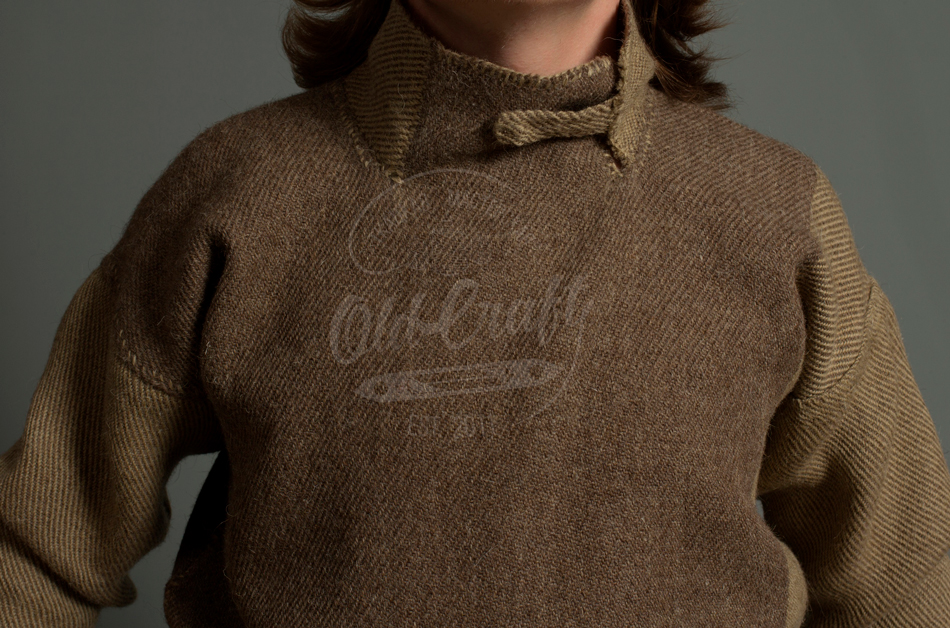Tunic from Guddal (type I)
Historical note
This tunic is rather plain, yet interesting in its details (pic. 1).
It consists of five parts. The tunic’s main part (upper part) is a rectangle with a cut-out in the center, two sleeves that have a trapezoidal shape, a standing collar and a rectangular “strap” at the collar.

Pic. 1. M. Vedeler’s Draktmaterialet fra Guddal (1992)
The tunic’s main part has a rectangular shape. The central cut-out is made suitable for the head to pass, because there are no cuts to make the hole wider. At the front side of the cut-out a small rectangular piece of fabric is left – a flap that is 11 cm wide and 8.5 cm high and covers the neck’s front part (scheme 1). When the sides are sewn at the waist level, the seam line is curved in a semicircle, passing inside of the sewn parts and forming a 10 cm high narrowing of the upper part.

Scheme 1. This version has been elaborated in accordance with the material from M. Vedeler’s Draktmaterialet fra Guddal (1992) book.
The sleeves are made in the form of trapezoids, the original has some patches at elbows.
The collar is cut in such a way that its upper edge is the side edge of the fabric that does not require hemming (pic. 2). The 8.5 cm high standing collar is stitched at the wide edge to the cutout circumference line by rough seams, and at the narrow edge to the flap’s side. The standing collar’s second edge did not survive, it probably went around the entire neck and ended at the flap’s second edge. The standing collar’s cut is at this place, it was probably fastened by some kind of clasp.

Pic. 2. M. Vedeler’s Draktmaterialet fra Guddal (1992)
The 2 x 8 cm strap at the collar is stitched to the standing collar’s edge, with no traces of buttons and/or loops, the clasps are absent.
The material of which this tunic is made is quite unusual (pic. 3). It might seem that the tunic is made of two different kinds of fabric, but it is actually the same fabric that was made of threads of two different colours. As it is described by the researchers, the fabric’s warp consisted of two types of threads – dark brown and light brown. So, the warp’s different colour visually divides the finished material (fabric) in two halves. The weft’s tone is the same as the warp’s dark brown half.

Pic. 3. M. Vedeler’s Draktmaterialet fra Guddal (1992)
The tunic’s upper part is made from the fabric’s dark part with a small inclusion of the light part, and the sleeves, standing collar and collar’s strap are made from the light part.
The fabric density is 15/8 threads per cm, the threads are of natural colours, not dyed.
We did not manage to determine all the seam types from the article (M. Vedeler’s Draktmaterialet fra Guddal), but they are all described as “rough”. It is visible at the pictures that all the parts are sewn together rather carelessly, and the fabric’s cutting edges are just sewn “over the edge”. The sleeves and the collar are stitched “joint to joint”.
Examples of our work




At the pictures above you can see tunics made of semi-coarse wool produced by us, as well as an example of our version of the handwoven fabric made for remodelment of the original find. You can find out about the current availability of the handwoven fabric at the eponymous section of our catalog.
Make an order for sewing
